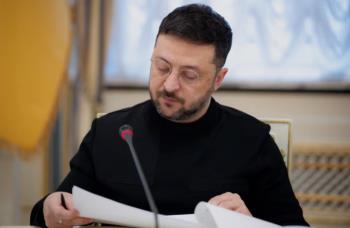Alwaght- Tensions between the US and Russia have been in their climatic point for years and Ukraine war even pushed the relations between the two to the lowest level since the collapse of the Soviet Union three decades ago, to a degree that risk of the two powers sliding into a direct confrontation is not unlikely.
Last Wednesday and Thursday, the Russian air force launched airstrikes on targets inside the American military base in Syria's Al-Tanf, on the border with Iraq and not far away from Jordanian border. The Russians reportedly had informed the Americans of their intention for air raids. The message was passed via a emergency coordination line set up by the two actors to steer clear of direct clashes between their forces in the Arab country. The US army said that shortly after the message, two SU-35 and a Su-24 fighter jets struck militants allied to Washington in Al-Tanf base. No casualties were reported.
The bombed forces seem to have been Kurdish elements working with the Americans and even receiving support and training from them. Media outlets reported last Thursday that unidentified drones targeted the base of the "Maghawir al-Thawra" terrorist group inside the US-run Al-Tanf base in eastern Syria, which is one of the most important centers of the US occupation forces in the region. For months, Washington has been training terrorists dubbed Maghawir al-Thawra at al-Tanf base under the pretext of training local militias to fight the re-emergence of ISIS terrorist group. Former Iraqi interior minister Qassem al-Zubaidi said earlier this year that by doing so Washington intended to counter Axis of Resistance in Syria and Iraq. Axis of Resistance, also called Resistance camp and Resistance front, is an alliance bringing together Iran, Syria, Iraq, Lebanon, Yemen, Palestine, and a set of sub-national groups in opposition to the US-led colonialist projects in West Asia.
Another incident took place on the night of the Russian attack in Al-Tanf. That night, the US forces raided a house in northeastern Syria suspected of harboring Hani Ahmad al-Kurdi, an ISIS official who is said to be the former governor of al-Raqqa, the former capital of the self-proclaimed ISIS caliphate. The mission proved a failure, reports said. Shortly afterwards, two Russian SU-34 jets patrolled the area, possibly for a reconnaissance mission about American activities. A US military spokesman said F-16 fighter jets then were scrambled, forcing Russian planes to leave the area.
Lieutenant General Eric Corella, the commander of the US Central Command (CEMTCOM), said that the US seeks to avoid miscalculation or any actions that lead to unnecessary confrontation. He added that this has been and will be their mission. The recent Russian behavior has been provocative and escalatory, according to him.
This set of events in Syria takes place at a tense time in US-Russian relations and in the background of the Ukraine war. In a situation where the West, led by Washington, is trying to foil Moscow's military goals in Ukraine through all sorts of political, economic, military, propaganda, and even cultural-sports pressures to make the war end without success and at great cost to the Kremlin, one of the main areas of Putin's reaction to the West seems to be highlighting the possibility of a military confrontation if Russia chooses to retaliate to press the US for its illegal and plunderous military presence in the war-weary nation.
The US has nearly 1,000 troops in Syria under the ruse of combating ISIS. Local authorities and Syrian officials repeatedly accuse the Americans of looting the country's oil in the northeast.
Russia steps up movement from the north to the northeast, disrupting the balance of power
In late February, as the Russian military launched its special military operation in Ukraine, regional analysts and media began speculating about how the war would affect Moscow's military presence in Syria. The speculations did not last long, and the media reported the beginning of the withdrawal of Russian infantry, air force, and engineering units from various parts of Syria.
As a result, Western and Arab media spoke of the possibility of a reduction in Russia's military presence in Syria. But recent developments tell us a totally different story. In addition to reinforcing its forces in northern Syria, in response to Turkish threats of a new round of cross-border military operations in Syria, Moscow has conducted large-scale joint air exercises with Damascus over these areas and is sending humanitarian aid to the people of As Suwayda and Hasakah.
Overall, these moves show that Russia, despite cutting its forces in Syria, is determined to increase the activity of its forces in the northern regions. Syrian media report that in late May, Moscow deployed troops, six K-52 assault helicopters and two Su-34 bombers to Qamishli airport. Moreover, Russian military convoys were also dispatched to the cities of Manbij and Tall Rifat with dozens of armored vehicles.
More importantly, Russia has ratcheted up its air force activities on the Syrian-Turkish border, as well as on the front lines in Hasakah and Aleppo provinces. The purpose is to ensure that a new Turkish attack is impossible without the green light from the Kremlin.
Since September 2015, about 63,000 Russian military personnel have been deployed to Syria. While the number of troops currently stationed in Syria is probably much smaller, what is important is that Moscow does not actually need to maintain large numbers of troops and equipment due to the significant downturn in conflict and combat activities.
Meanwhile, a more accurate measure of Russia's influence in Syria is its ability to counter rival actors in northern Syria, and the war in Ukraine has not much affected it.
No doubt, the Russian measures and saber-rattling in Syria's north, particularly blocking of new Turkish military action and disruption of the American freedom of movement in this part of Syria along with mediation of talks between the central Syrian government and the Kurds, would enhance Moscow's political position amid growing military activities in northern equations.



























